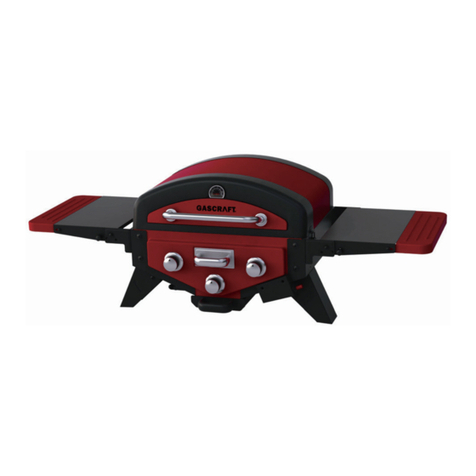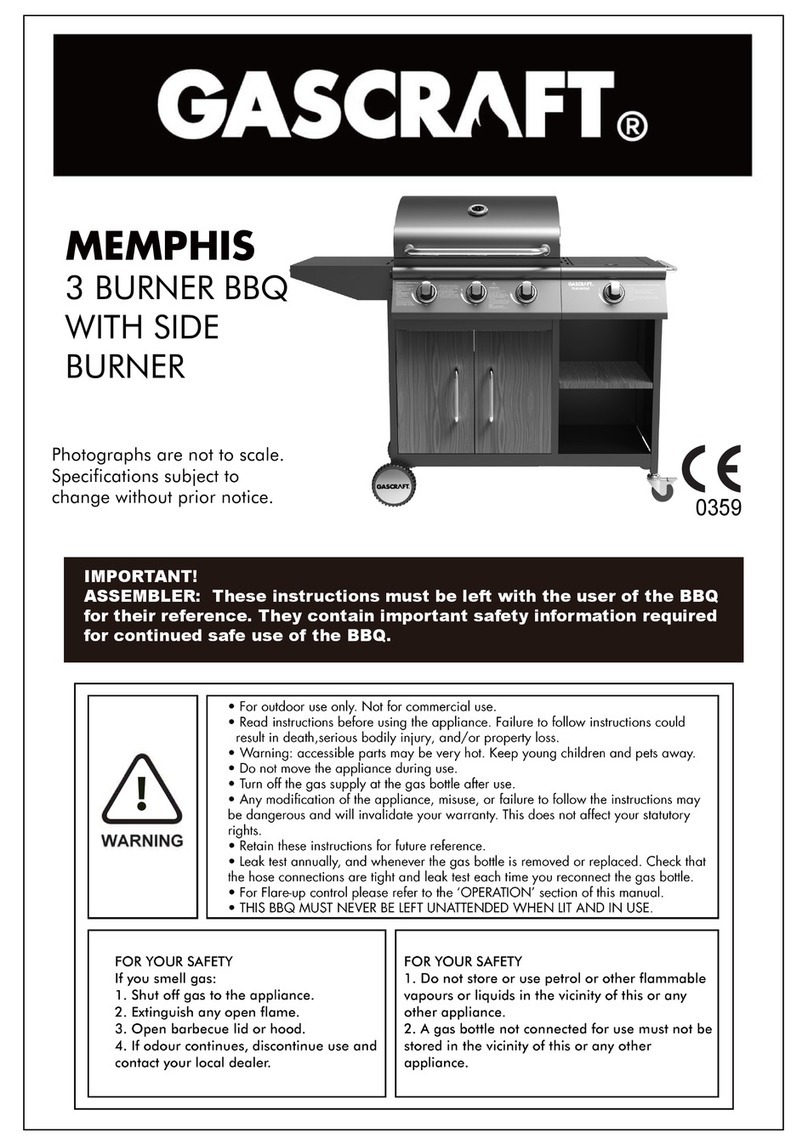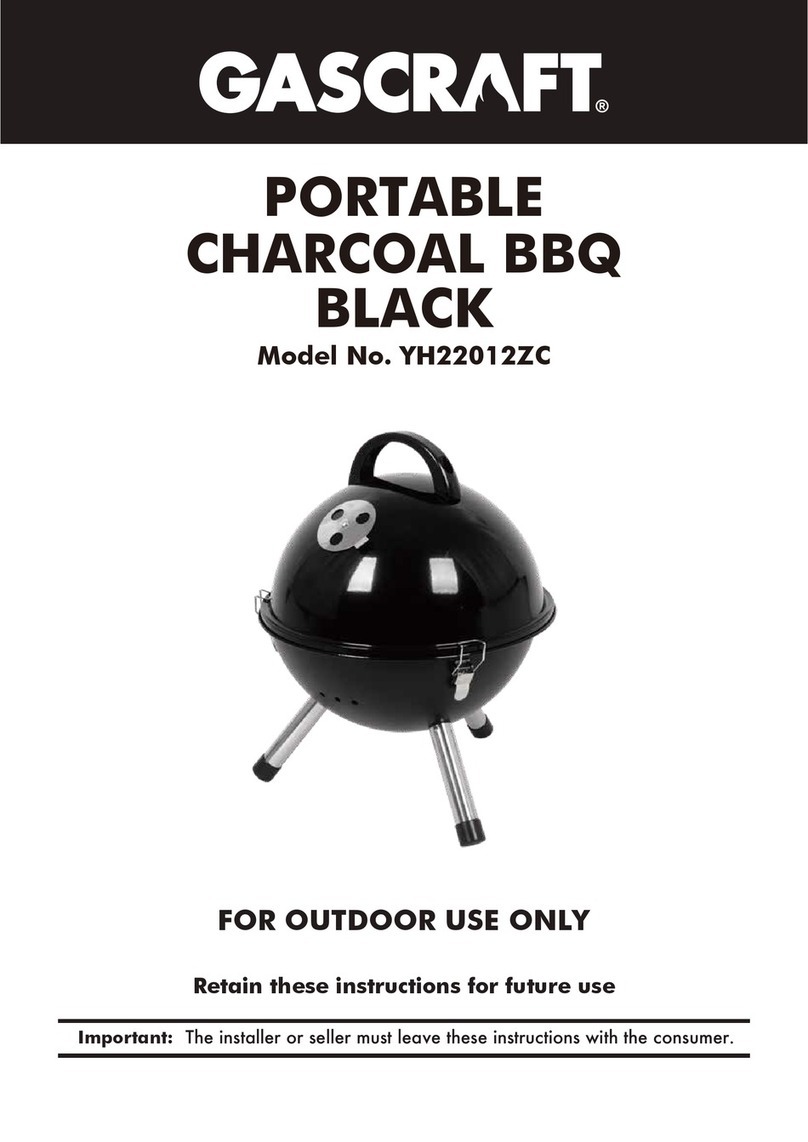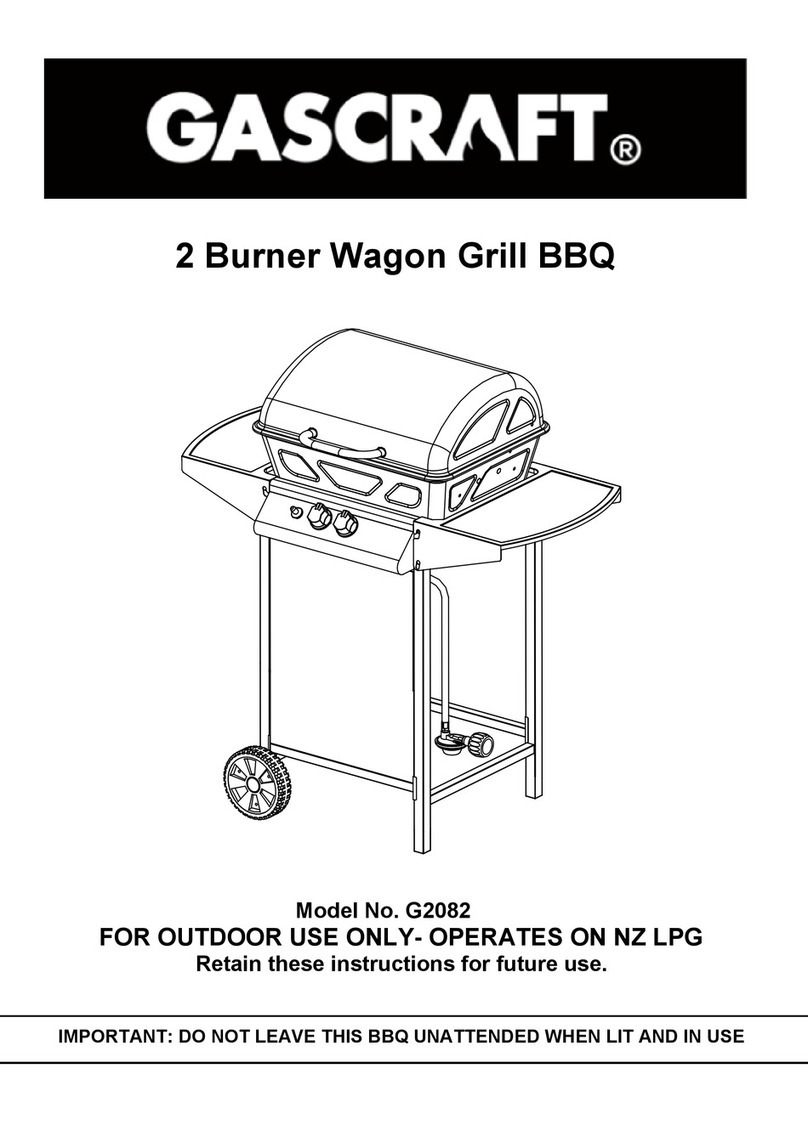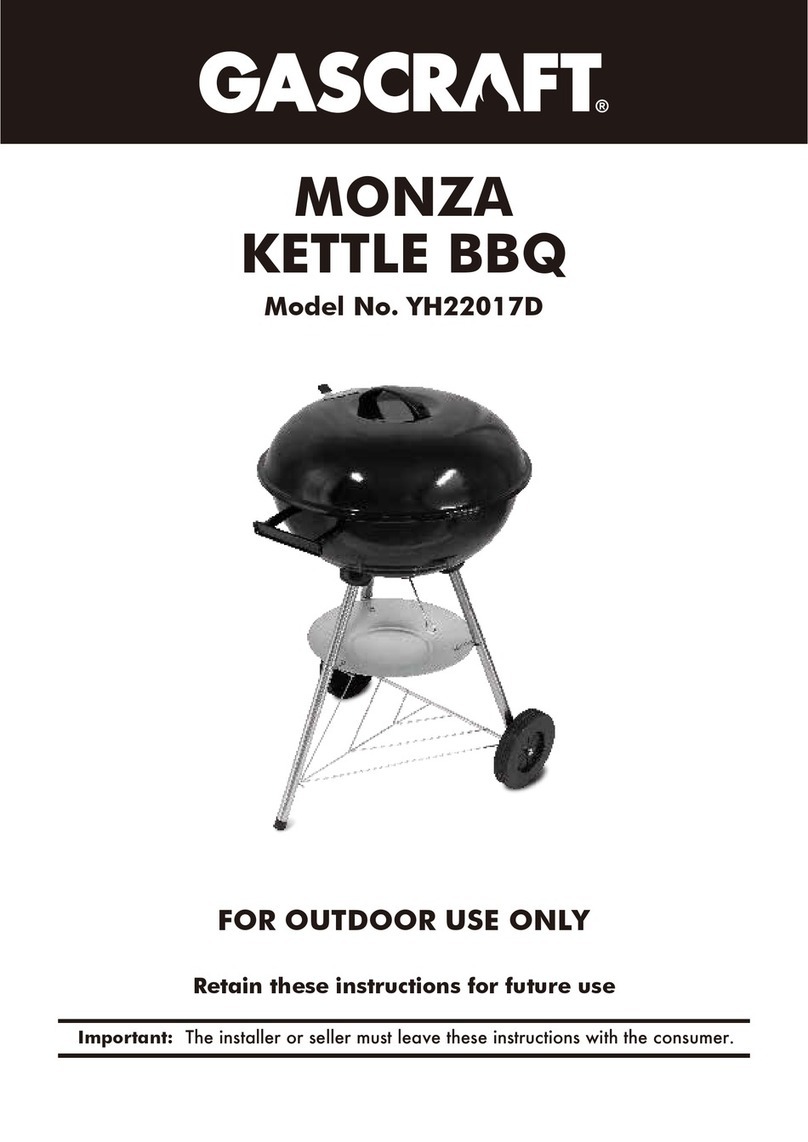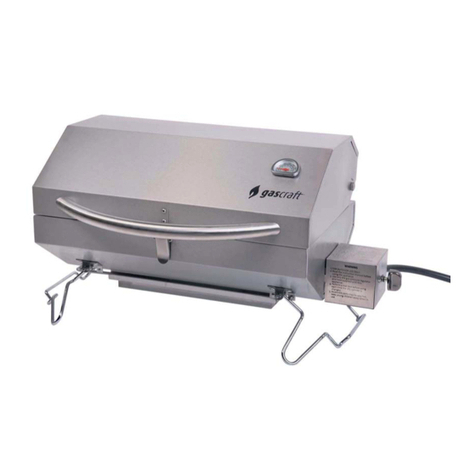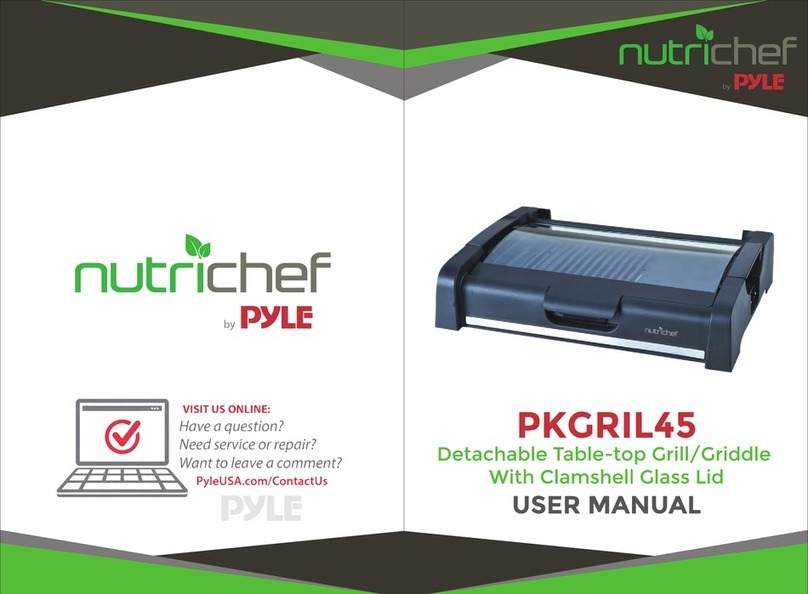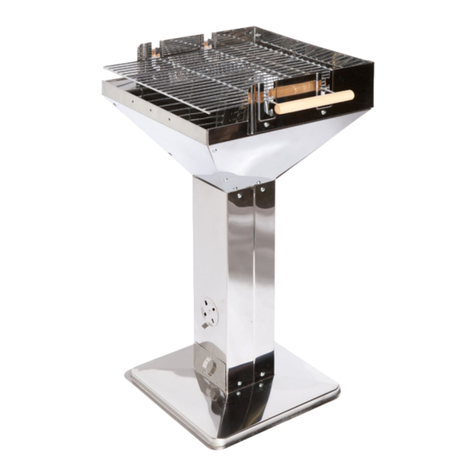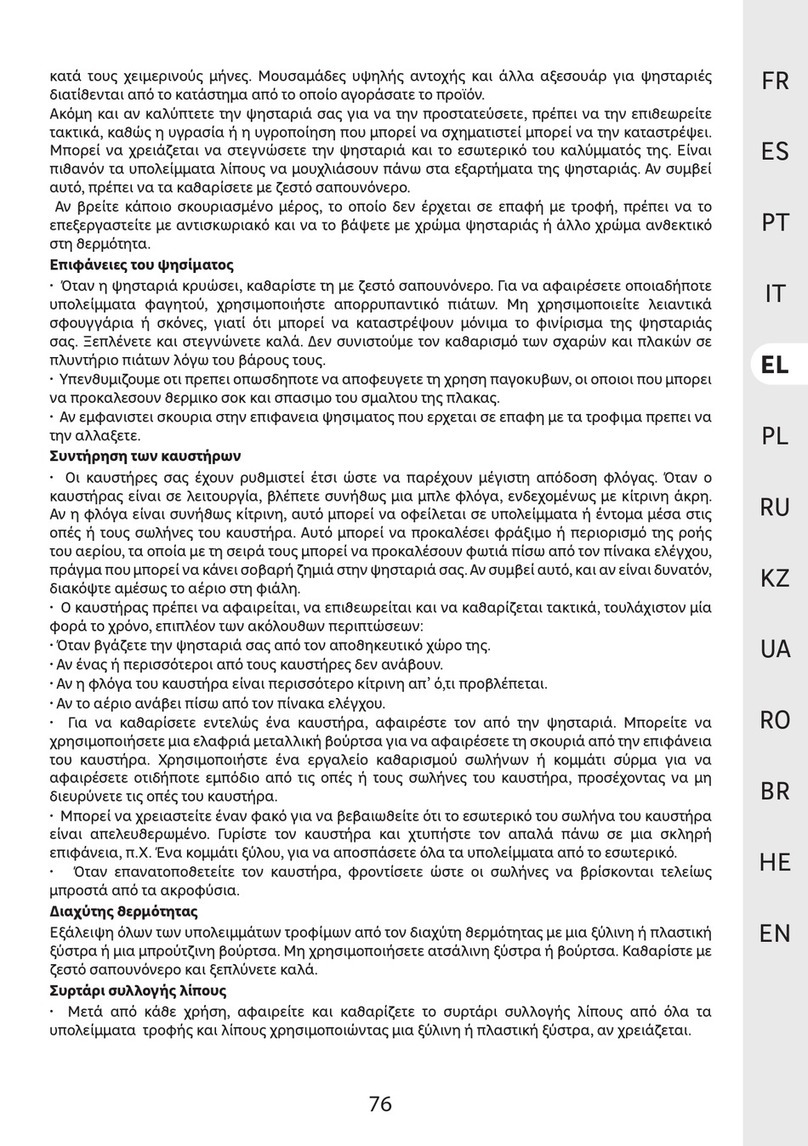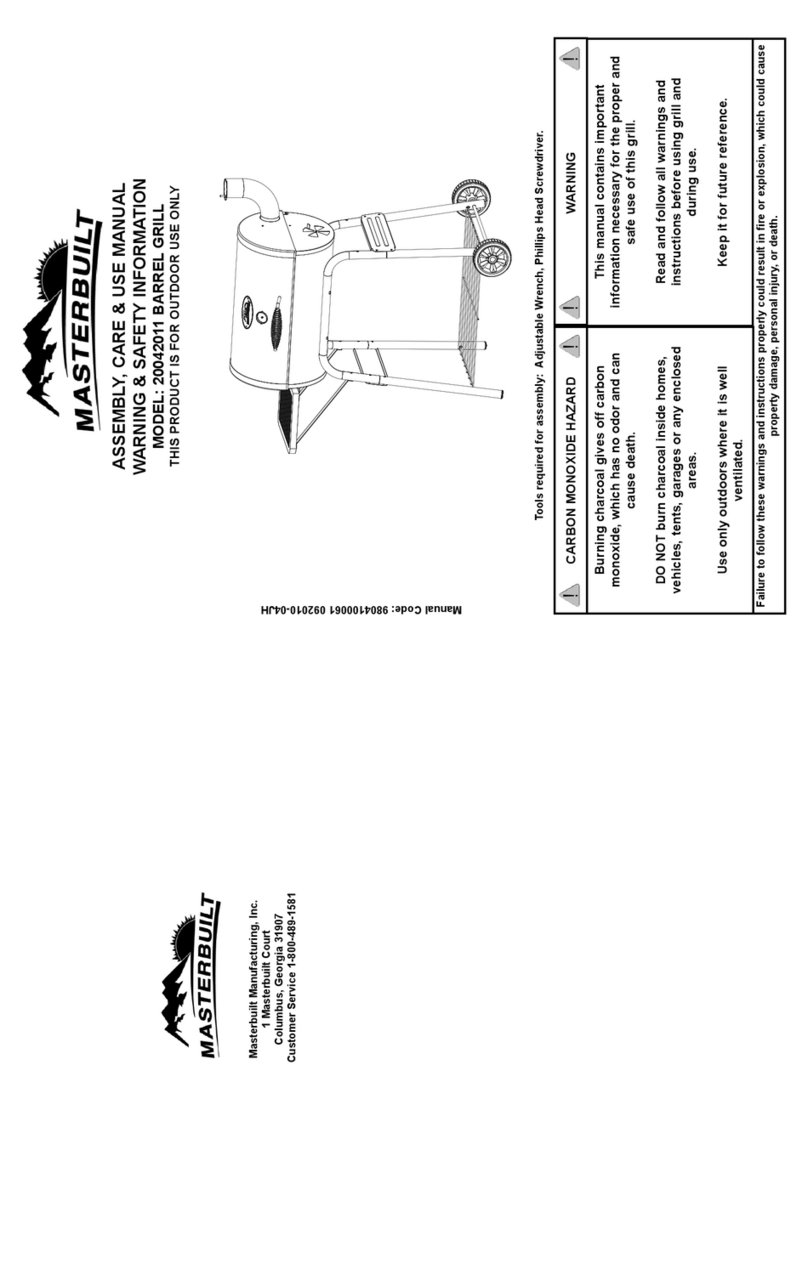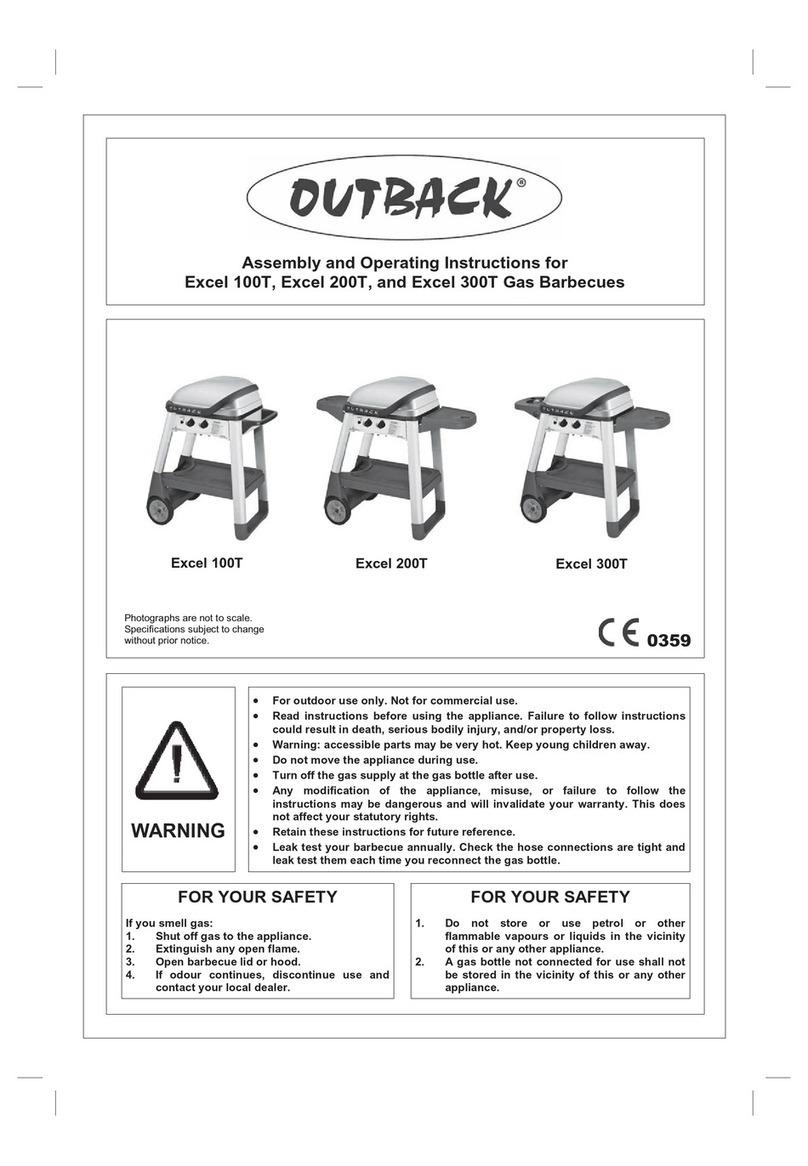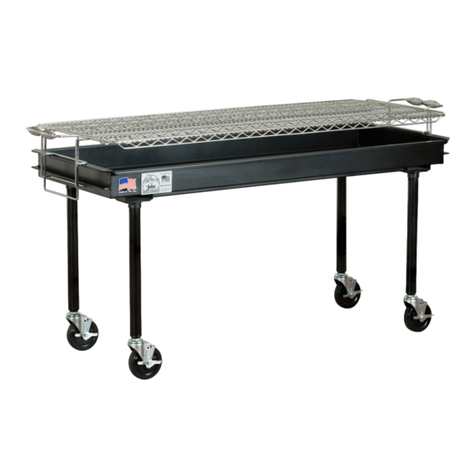
Flare-Up Control *Very Important Notice*
Flare-ups occur when meat is barbecued, and its
fat and juices fall upon the hot flame tamer.
Smoke of course helps give food its barbecued
flavour, but it is best to avoid excessive flare-up to
prevent food being burned. To control flare-ups, it
is ABSOLUTELY ESSENTIAL to trim away
excess fat from meat and poultry before grilling,
use cooking sauces and marinades sparingly and
try to avoid very cheap cuts of meat or meat
products as these tend to have a high fat and
water content. Also the burners should always be
placed on the low setting during cooking.
When flare-ups do occur, they can usually be
extinguished by applying baking soda or salt
directly onto the flame tamer. Always protect your
hands when handling anything near the cooking
surface of the barbecue and take care to protect
yourself from the flames.
If a fat fire occurs, please see the instructions
given below.
Fat Fires
Empty and clean the drip tray (and foil liner, if
applicable) of food debris after each cooking
session. If the barbecue is to be used for large
gatherings, it will be necessary to turn off and cool
the barbecue every two hours to remove food
debris from the drip tray (and foil liner, if
applicable) and clean it out. The time between
cleaning may need to be reduced if very fatty
foods or cheap meat products are being cooked.
Failure to do this may result in a fat fire, which
may cause injury and could seriously damage the
barbecue.
In the event of a fat fire:
.If safe to do so, turn all control knobs OFF.
.Turn off the gas supply at the gas bottle.
.Keep everyone at a safe distance from the
barbecue and wait until the fire has burnt out.
.Do not close the hood or lid of the barbecue.
.NEVER DOUSE A BARBECUE WITH WATER.
IF AN EXTINGUISHER IS USED, IT SHOULD
BE A POWDER TYPE.
.DO NOT REMOVE THE DRIP TRAY.
.If the fire does not seem to be abating or
appears to be worsening, contact your local
Fire Brigade for assistance.
End of Cooking Session
After each cooking session, turn the barbecue
burners to the “high” position and burn for 5
minutes.This procedure will burn off cooking
residue, thus making cleaning easier. Make sure
the hood or lid is open during this process.
Turning Off Your Barbecue
When you have finished using your barbecue, turn
all the control valves fully clockwise to the “Off”
position then switch off the gas supply at the
bottle.
Wait until the barbecue is sufficiently cool before
closing its hood or lid.
Care and Maintenance
Regularly clean your barbecue between uses and
especially after extended periods of storage.
Ensure the barbecue and its components are
sufficiently cool before cleaning. Do not leave the
barbecue exposed to outside weather conditions
or stored in damp, moist areas.
Never handle hot parts with unprotected hands.
Never douse the barbecue with water when the
surfaces are hot.
In order to extend the life and maintain the
condition of your barbecue, we strongly
recommend that the unit be covered when left
outside for any length of time, especially during
the winter months. Heavy-duty barbecue covers
and other accessories are available from your
local stockist.
Even when your barbecue is covered for its
protection, it must be inspected on a regular basis
as damp or condensation can form which may
result in damage to the barbecue. It may be
necessary to dry the barbecue and the inside of
the cover.It is possible for mould to grow on any
fat remaining on parts of the barbecue. This
should be cleaned off smooth surfaces with hot
soapy water.
Any rust that is found that does not come into
contact with the food should be treated with a rust
inhibitor and painted with barbecue paint or a heat
resistant paint.
A chrome cleaner may be used on chrome parts if
required. To prevent rusting, wipe chrome plated
warming racks etc. with cooking oil after rinsing
and drying.
Cooking Surfaces & Warming Rack
When the barbecue has cooled, clean it with hot
soapy water. To remove any food residue, use a
mild cream cleaner on a non-abrasive pad. Do not
use scouring pads or powders as they can
permanently damage the finish. Rinse well and
dry thoroughly. To protect the cast iron cooking
surfaces; when clean and dry, apply a light coat of
cooking oil to the cooking surfaces. Due to the
weight of the cooking surfaces, we do not
recommend cleaning in a dishwasher.
It is quite normal for surface rust to be present on
the cooking surface.If rust appears between
uses or in storage, clean with a soft brass wire
brush. Be careful not to damage the cooking
surface, re-oil and cure.
Burners
Provided that they are operating correctly, in
normal usage, burning off the residue after
cooking will keep the burners clean.
The burners should be removed and cleaned
annually, or whenever heavy build-up is found, to
ensure that there are no signs of blockage (debris,
insects) in either the burner portholes or the
primary air inlet of the burners. Use a pipe
cleaner to clear obstructions.




















